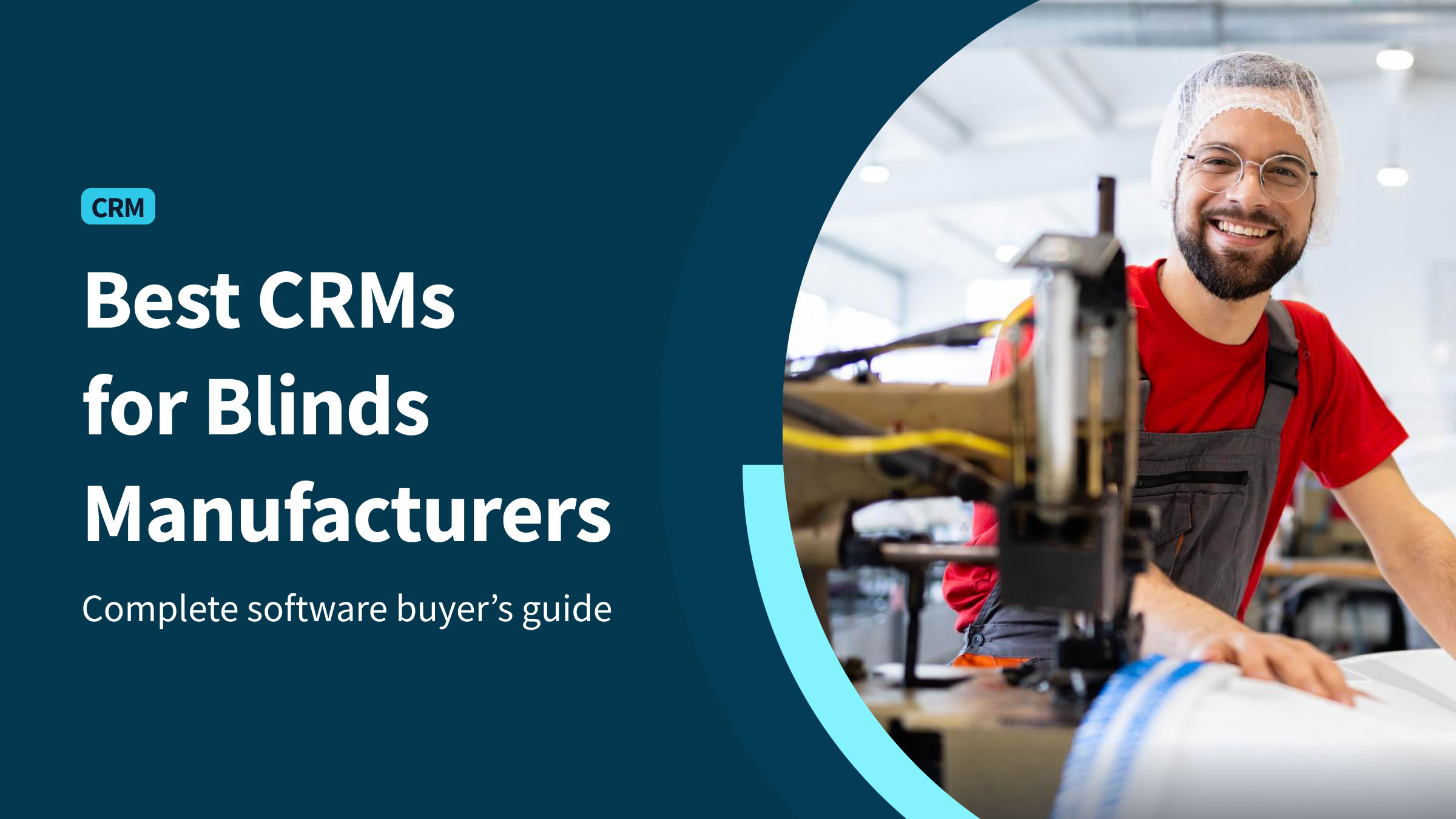Most companies use QuickBooks Online for managing finances, but many are unaware of how it can also benefit your manufacturing business and its processes. With an industry-specific version for manufacturing and wholesale, QuickBooks Online has advanced inventory tools that simplify complex procedures and improve order accuracy.
If you want to use QuickBooks to streamline your manufacturing processes, this QuickBooks Manufacturing and Wholesale tutorial will tell you everything you need to know.
QuickBooks manufacturing and wholesale accounting software
QuickBooks Online advertises its manufacturing and wholesale edition as an effective way to automate manual processes and keep your sales fulfillment on track. It is ideal for manufacturing businesses that need the following.
- Accurate inventory counts: If your business has a sizable inventory, QuickBooks Online tracks inventory items as they move throughout the sales process.
- Detailed analytics and financial reports: Study the financial aspects of your business and use key inventory reports to make more informed decisions and deliver accurate forecasts.
- Easy assembly processes: Handling inventory processes manually takes up significant time that you don’t have. With QuickBooks Online, you can define material, inventory, and labor amounts accurately and automatically.
- Specific pricing structures: If you’re looking for customer classifications, QuickBooks can segregate payment details according to customer type or individual sales.
Is QuickBooks good for manufacturing?
While it has its limitations, QuickBooks poses many benefits for your manufacturing firm.
Reduce waste
Advanced inventory management is essential to preventing waste and reducing overhead costs.
With QuickBooks, you can track inventory items through your Chart of Accounts. When you use this feature to track inventory on a first in, first out (FIFO) basis, you prevent dead stock from building up.
Eliminate bottlenecks
Bottlenecking is when your master production schedule reaches a slow point. Plan production typically slows when inventory runs out, or the necessary equipment is in use.
Fortunately, QuickBooks Manufacturing features like routing manufacturing pinpoint where your bottlenecks are.
From here, you can use manufacturing lead time features to monitor the production process for each inventory assembly item strictly.
Automation
Automation shouldn’t have to involve incorporating expensive equipment into your process. Instead, you can automate repetitive tasks like tracking inventory items, scheduling distribution and sending real-time product updates to save time and money.
Develop your master production schedule
A master production schedule (MPS) plots your entire production process from start to finish. Take advantage of QuickBooks’ scheduling production tools to:
- Fulfill orders quickly.
- Prevent delays and shortages.
- Use only the raw materials you need.
Plus, a thorough MPS lets your business adjust to fluctuations in demand and improve inventory cost control.
QuickBooks integration
After this QuickBooks manufacturing and wholesale tutorial, you’ll be an expert at how to use QuickBooks Manufacturing.
However, this doesn’t mean it’s the only tool you need to run your business!
QuickBooks integrates with over 650 business applications — so make sure to look for tools that connect with QuickBooks. Even better if you can find a solution that syncs your data bidirectionally!
Save your BOMs in one place
A scattered bill of materials (BOM) makes it virtually impossible to keep your production progress on schedule.
Use QuickBooks Manufacturing to define BOMs and automatically list what materials you need and whether you have them in stock.
Centralize your entire business
Keeping up with daily operations is no easy feat, especially when your data isn’t centralized.
The good news is that QuickBooks can present this information in a visual dashboard that your team can access.
Instead of developing spreadsheets from scratch, you can facilitate your inventory management in one place and categorize them readably.
How to use QuickBooks for manufacturing and wholesale
Now that you know the benefits of using QuickBooks Manufacturing and Wholesale, it’s time to implement its best features. So without further ado, let’s dive into the QuickBooks manufacturing and wholesale tutorial.
Tracking raw materials inventory and parts-in-process
Excellent manufacturing is a carefully developed process. Your inventory management is only as good as your production management.
Thus, tracking every inventory transfer across an expansive list of inventory sites is imperative.
With QuickBooks, there are so many ways to monitor your inventory. You can follow your item’s journey via:
- Mobile barcode scanning.
- Lot and serial number tracking.
Adding inventory assembly items
For this QuickBooks manufacturing and wholesale tutorial let’s go into more detail on assemblies management.
QuickBooks Enterprise for Manufacturing and Wholesale has an Inventory Assembly feature where you can assign accounts for specific items. When you add an item, follow these steps:
- From the Lists menu, choose Item List.
- Pick New Item.
- Choose Inventory Assembly, then specify your account.
- Describe the item and fill in the Sales Price box. Assign a tax code, if necessary.
- Then, use your BOM list to identify individual components.
- Specify the asset account for inventory valuation.
- Select a build point and identify the lowest inventory quantity of the item that you can sustain before needing to manufacture more. Eventually, when your inventory level drops to this assigned number, QuickBooks will remind you to start production.
- Leave the On Hand, As Of, and Total Value boxes empty.
Recording manufacture or assembly of items
When you assemble a new item, you’ll want to record each step of manufacture for easy reference. Do this in a few simple steps:
- Select Vendors, then Inventory Activities, then Build Assemblies.
- Select your item from the Assembly Item list, filling in the Quantity to Build box.
- When you’re done, select Build and Close.
- If you want to add another item, click Build and New.
Managing multiple inventory locations
QuickBooks Enterprise makes record-keeping easier if you store inventory part items in multiple locations. Use it to assign inventory sites and track items accordingly.
Turn on the functions for Advanced Inventory Tracking with the following steps:
- Choose Edit.
- Click on Preferences.
- Click Items, then Inventory, and head to Company Preferences.
- Choose Advanced Inventory Settings and turn on the tracking function.
What is negative inventory in QuickBooks manufacturing?
Negative inventory on QuickBooks Manufacturing occurs when you create an invoice but forget to update your current inventory holdings.
Suppose you have a product level of zero but generate your invoice and complete sales order fulfillment before updating your inventory.
When you ship your order out, QuickBooks will set your inventory stock status as -1.
While it may seem like an easy fix, negative inventory can make it difficult to calculate your average cost for a product.
This is a key takeaway from this QuickBooks manufacturing and wholesale tutorial.
Limitations of QuickBooks for manufacturing
Perhaps QuickBooks’ biggest downfall is its inability to convert raw materials into a finished product.
For example, suppose your raw inventory availability changes — this affects your finished product.
Unfortunately, QuickBooks won’t register this, and you have to make a manual inventory adjustment each time you finish a project.
And if you forget to update your inventory stock status, you risk a Ship Negative status.
Method CRM for QuickBooks manufacturing and wholesale
This QuickBooks manufacturing and wholesale tutorial helps you understand how to enhance your workflows, but it doesn’t help you overcome every QuickBooks limitation.
For a complete manufacturing and wholesale solution that combines production scheduling, key inventory reports, manufacturing accounting, ERP, and CRM capabilities, use Method alongside QuickBooks.
Below is a preview of what Method CRM can do for you.
There are many benefits for using Method CRM with QuickBooks Manufacturing.
- Lead management: While QuickBooks Manufacturing cannot manage potential sales, you can track opportunities with Method CRM. Method CRM automates lead collection with online sales forms for suppliers and customers.
- Estimates: Create estimates for leads with Method and sync them to QuickBooks once you close your sale.
- Online customer portals: Dealing with multiple customers and vendors can feel overwhelming. Let them self-serve online at their convenience with Method CRM.
- Commission tracking: Manual commission tracking is a headache. Instead, create a custom commission trackers (that exclude sales tax and shipping fees) to simplify your process.
- Online document approval: Instead of chasing down vendors and customers via email or phone, use Method CRM’s online document approval workflows or e-signature capture to sign off on any inventory adjustment or delivery.
The best part — you can automatically sync your data between Method CRM and QuickBooks, whether its contacts, sales transactions, or payments.
QuickBooks manufacturing and wholesale FAQs
How do I manage production in QuickBooks?
You can manage your current inventory holdings with QuickBooks Online Plus’ tracking features. To turn on inventory tracking:
- Go to Settings.
- Select the Sales tab.
- Go to Products and Services and click Edit.
- Turn on Show Product/Service Column on Sales Forms and set up price rules as necessary.
- Click Track Quantity and Price/Rate and Track Inventory Quantity On-Hand.
Through inventory tracking, you can add as many items as you want. Tag them as service items, non-inventory items, or bundles and update inventory availability as necessary.
Then, you can track which products sell through invoices and sales order fulfillment.
QuickBooks can also remind you when it’s time to restock once you reach your lowest inventory quantity.
How much is QuickBooks Manufacturing?
QuickBooks Manufacturing and Wholesale costs $549.99 for an annual subscription per user. With payroll functionality, a single-user account is $1,049.99 per year.
You can access QuickBooks Manufacturing and Wholesale if you already have QuickBooks Premier. QuickBooks Premier Desktop users can enjoy the added benefit of automatic data backups and recovery, annual system updates, and regular customer support.
On top of QuickBooks’ primary bookkeeping features, QuickBooks Manufacturing and Wholesale provides superior control over inventory part items and more flexibility with pricing structures.
Does QuickBooks Online have a bill of materials?
Yes, QuickBooks Online has a bill of material function on the Assembly Screen. With this feature, you can get the total average cost of manufacturing a specific product.
See how you can enhance the power of QuickBooks with Method CRM!
There are many benefits for using Method CRM with QuickBooks Manufacturing.
- Lead management: While QuickBooks Manufacturing cannot manage potential sales, you can track opportunities with Method CRM. Method CRM automates lead collection with online sales forms for suppliers and customers.
- Estimates: Create estimates for leads with Method and sync them to QuickBooks once you close your sale.
- Online customer portals: Dealing with multiple customers and vendors can feel overwhelming. Let them self-serve online at their convenience with Method CRM.
- Commission tracking: Manual commission tracking is a headache. Instead, create a custom commission trackers (that exclude sales tax and shipping fees) to simplify your process.
- Online document approval: Instead of chasing down vendors and customers via email or phone, use Method CRM’s online document approval workflows or e-signature capture to sign off on any inventory adjustment or delivery.
The best part — you can automatically sync your data between Method CRM and QuickBooks, whether its contacts, sales transactions, or payments.
QuickBooks manufacturing and wholesale FAQs
How do I manage production in QuickBooks?
You can manage your current inventory holdings with QuickBooks Online Plus’ tracking features. To turn on inventory tracking:
- Go to Settings.
- Select the Sales tab.
- Go to Products and Services and click Edit.
- Turn on Show Product/Service Column on Sales Forms and set up price rules as necessary.
- Click Track Quantity and Price/Rate and Track Inventory Quantity On-Hand.
Through inventory tracking, you can add as many items as you want. Tag them as service items, non-inventory items, or bundles and update inventory availability as necessary.
Then, you can track which products sell through invoices and sales order fulfillment.
QuickBooks can also remind you when it’s time to restock once you reach your lowest inventory quantity.
How much is QuickBooks Manufacturing?
QuickBooks Manufacturing and Wholesale costs $549.99 for an annual subscription per user. With payroll functionality, a single-user account is $1,049.99 per year.
You can access QuickBooks Manufacturing and Wholesale if you already have QuickBooks Premier. QuickBooks Premier Desktop users can enjoy the added benefit of automatic data backups and recovery, annual system updates, and regular customer support.
On top of QuickBooks’ primary bookkeeping features, QuickBooks Manufacturing and Wholesale provides superior control over inventory part items and more flexibility with pricing structures.
Does QuickBooks Online have a bill of materials?
Yes, QuickBooks Online has a bill of material function on the Assembly Screen. With this feature, you can get the total average cost of manufacturing a specific product.
See how you can enhance the power of QuickBooks with Method CRM!
Image credit: Drazen via Adobe Stock






